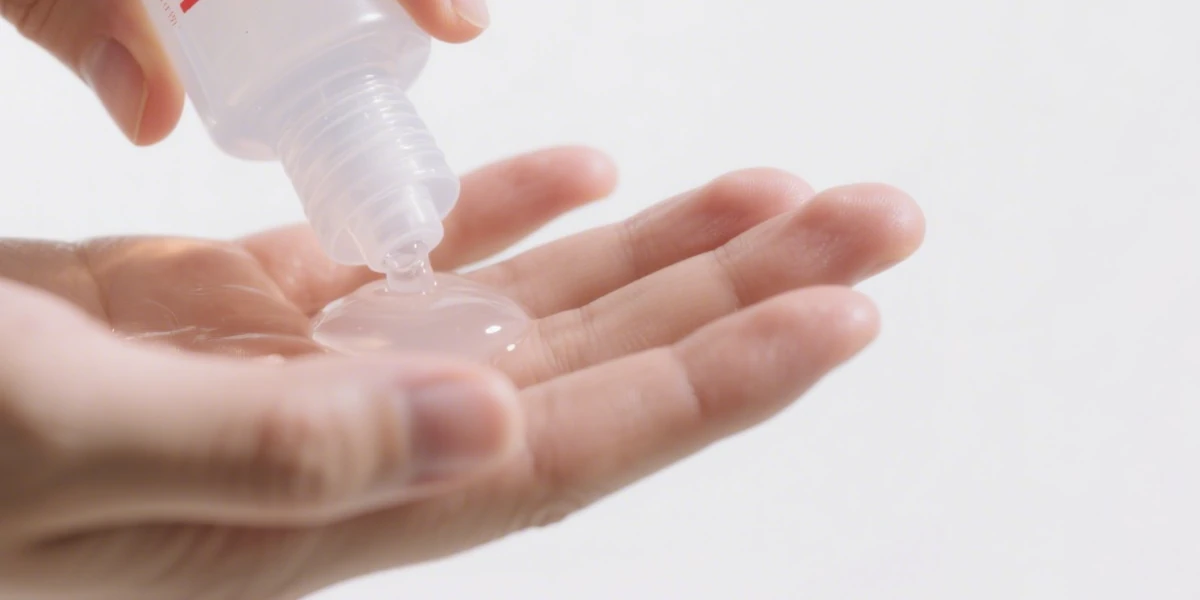How to Lose Weight Without Exercise?

Strong 8k brings an ultra-HD IPTV experience to your living room and your pocket.
Losing weight is a common goal for many, but traditional methods like strict dieting and rigorous exercise can be challenging to maintain. Whether due to a busy schedule, physical limitations, or simply a lack of motivation, not everyone can commit to a workout routine. The good news? You can still lose weight without exercise by making smart lifestyle and dietary changes.
In this guide, we’ll explore the factors affecting weight loss, how to determine if you need to lose weight, and practical, science-backed strategies to shed pounds without hitting the gym.
What Factors Can Affect Weight Loss?
- Lifestyle Habits: Your daily routines, including meal timing, food choices, and stress levels, can significantly impact your weight. For instance, irregular eating patterns can lead to overeating and poor food choices.
- Environment: Where you live, work, play, and worship can affect your access to healthy options. Urban areas may offer more healthy food choices, while rural locations might limit access. Additionally, social circles can influence dietary habits.
- Sleep: Quality and quantity of sleep directly correlate with your metabolism and hunger hormones. Poor sleep can lead to increased cravings for unhealthy foods and decreased motivation to make healthier choices.
- Medications: Some medications, such as antidepressants or corticosteroids, can contribute to weight gain. It’s essential to consult with a healthcare provider if you suspect medication is affecting your weight.
- Health Problems: Conditions like hypothyroidism, polycystic ovary syndrome (PCOS), and insulin resistance can hinder weight loss efforts. Understanding these conditions can help you seek appropriate treatment and tailor your approach.
- Family History and Genetics: Your genetic makeup can predispose you to certain weight patterns. Family habits and inherited traits can also influence your relationship with food and your body.
Learn If You Need to Lose Weight
To determine if weight loss is necessary, consider:
Body Mass Index (BMI): A simple calculation based on height and weight that categorizes individuals into underweight, normal weight, overweight, or obese. According to the World Health Organization, a BMI of 25-29.9 is considered overweight, while 30 or above indicates obesity. Research shows that individuals with a BMI in the overweight category have a 50-100% increased risk of type 2 diabetes and cardiovascular diseases compared to those with a normal BMI.
Waist Size: A measurement that can indicate abdominal fat, which is a risk factor for various health issues. A waist size over 35 inches for women and 40 inches for men may indicate a higher risk of heart disease and diabetes, according to the National Heart, Lung, and Blood Institute.
How to Lose Weight Without Exercise
Sticking to a strict diet and workout plan isn’t always realistic. Here are 10 proven ways to lose weight without exercise
1. Chew Thoroughly and Slow Down
Eating slowly helps your brain register fullness, preventing overeating. A study found that fast eaters are 115% more likely to be overweight than slow eaters . Another trial showed that chewing food 40 times instead of 15 led to 12% fewer calories consumed per meal
2. Use Smaller Plates
This simple trick can help control portion sizes and prevent overeating. Research indicates that people tend to fill their plates, so smaller dishes can create the illusion of a full plate with fewer calories.
3.Consume Plenty of Protein
High-protein foods can increase feelings of fullness and reduce hunger throughout the day. Incorporating protein-rich snacks, like Greek yogurt or nuts, can help you stay satisfied longer.
4.Cook Your Meals at Home
Preparing your meals allows you to control ingredients and portion sizes, leading to healthier choices. Home-cooked meals often contain fewer calories and more nutrients compared to restaurant meals.
5.Consume Fiber-rich Meals
Fiber keeps you full longer, reducing unnecessary snacking. Studies suggest that increasing fiber intake by 14g/day can lead to a 10% decrease in calorie intake and 4.5 lbs (2 kg) of weight loss over 4 months.
Top High-Fiber Foods:
- Fruits– Apples, berries, pears
- Vegetables– Broccoli, carrots, Brussels sprouts
- Whole Grains– Oats, quinoa, brown rice
- Legumes– Lentils, black beans, chickpeas
6. Drink Water Regularly
Staying hydrated can curb hunger and boost metabolism. Research shows that drinking 500ml (17oz) of water increases metabolic rate by 24-30% for up to 1.5 hours . Additionally, drinking water 30 minutes before meals can reduce calorie intake by 44%, aiding weight loss.
7. Avoid Electronic Distractions While Eating
Focusing on your meal can enhance your eating experience and prevent mindless snacking. Eating without distractions can help you enjoy your food more and recognize when you’re full.
8. Sleep Well and Reduce Emotional Stress
Quality sleep and stress management are crucial for maintaining a healthy weight. Chronic stress can lead to emotional eating, while proper sleep helps regulate hormones that control hunger.
9. Avoid Sugary Drinks
Cutting out sugary beverages can significantly reduce calorie consumption. Opt for water, herbal teas, or black coffee to minimize sugar intake.
10. Surgical Treatment for Weight Loss
For those seeking more aggressive methods, surgical options exist, including:
Gastric Bypass (Roux-en-Y)
How it works: Surgeons create a small stomach pouch and reroute digestion to bypass part of the small intestine.
Effect: Limits food intake + reduces calorie absorption.
Weight loss: Typically 60-80% of excess weight within 1-2 years
Best for: Severe obesity (BMI ≥40) or BMI ≥35 with weight-related conditions.
Liposuction
How it works: Fat is suctioned out via small incisions using a cannula.
Effect: Removes localized fat (e.g., abdomen, thighs) but doesn’t treat obesity.
Recovery: 1-2 weeks downtime; results visible after swelling subsides.
Note: Fat can return without lifestyle changes
Gastric Sleeve (Sleeve Gastrectomy)
How it works: ~80% of the stomach is removed, leaving a banana-shaped “sleeve.”
Effect: Restricts portion sizes + reduces hunger hormones (ghrelin).
Weight loss: ~50-70% of excess weight in 1-2 years.
Advantage: No intestinal rerouting (lower complication risk vs. bypass).
11. No-Surgical Treatment for Weight Loss
There are also non-invasive options available that can help individuals achieve their weight loss goals without the need for surgical intervention. Here’s a closer look at some popular non-surgical treatments:
Cryolipolysis
Cryolipolysis a technique that targets stubborn fat areas by cooling them to temperatures that trigger fat cell apoptosis (cell death). This procedure effectively reduces localized fat without damaging surrounding tissues. Clinical studies have shown that patients can experience a 20-25% reduction in fat in treated areas after just one session. It’s particularly effective for areas like the abdomen, thighs, and love handles.
Radiofrequency
Radiofrequency (RF) therapy uses energy waves to heat the deeper layers of the skin, promoting collagen production and skin tightening. Devices like the Tingmay 448K RF machine not only help in reducing fat but also improve skin elasticity and texture. This treatment can lead to a smoother appearance and is often used on areas like the abdomen, arms, and face. Studies indicate that RF treatments can result in a significant reduction in circumference and improved skin quality after multiple sessions.
Ultrasound Cavitation
Ultrasound cavitation utilizes high-frequency sound waves to break down fat cells in targeted areas of the body. The procedure is painless and requires no downtime, making it a convenient option for those looking to reduce fat without surgery. Ultrasound waves create bubbles that implode, effectively disrupting fat cells. Clinical evidence suggests that patients can see a 2-4 cm reduction in circumference in treated areas after a series of sessions, particularly around the abdomen, thighs, and arms.
Emsculpt
Emsculpt is a revolutionary treatment that combines muscle building and fat reduction through high-intensity focused electromagnetic (HIFEM) technology. This non-invasive procedure induces powerful muscle contractions that are not achievable through voluntary exercise. Studies show that patients can experience up to a 16% increase in muscle mass and a 19% reduction in fat in the treated areas after a series of sessions. Emsculpt is commonly used on the abdomen and buttocks, making it a popular choice for those looking to tone their physique.
Laser Lipo
Laser lipo, also known as laser lipolysis, uses laser energy to target and break down fat cells. This less invasive method involves inserting a thin laser fiber under the skin, where it converts fat cells into a liquid that can be naturally eliminated by the body. Laser lipo is effective for smaller areas of fat reduction and can lead to a noticeable improvement in body contour with minimal downtime. Patients typically experience less bruising and swelling compared to traditional liposuction, making it an attractive alternative.
Surgical vs. Non-Surgical Weight Loss Treatments
Both surgical and non-surgical treatments offer viable paths for weight loss, depending on individual needs and preferences. While surgical options may provide rapid results, non-invasive methods can be effective for gradual weight loss and are often less risky. It’s essential to choose methods that align with your lifestyle and health goals.
Conclusion
Losing weight without exercise is possible with smart dietary choices, better sleep, and stress management. If you’ve struggled with traditional weight loss methods, consider non-invasive treatments for a safer, more convenient approach.
What’s your favorite weight loss tip? Share your experience in the comments!
Interested in non-surgical fat reduction? Contact us to find the best treatment for your needs!
Note: IndiBlogHub features both user-submitted and editorial content. We do not verify third-party contributions. Read our Disclaimer and Privacy Policyfor details.







